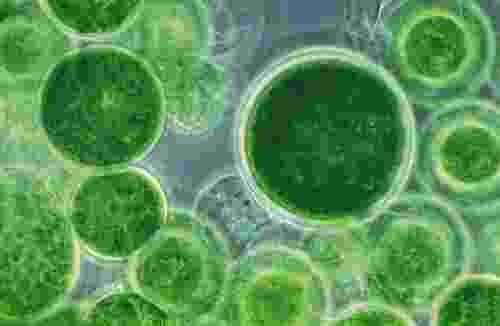Overexpression of PSR1 in Chlamydomonas reinhardtii induces luxury phosphorus uptake
27 July 2023


Microalgae under the microscope
Authors: Stephen P. Slocombe, Tatiana Zúñiga-Burgos, Lili Chu, Payam Mehrshahi, Matthew P. Davey, Alison G. Smith, Miller Alonso Camargo-Valero, Alison Baker
Remediation using micro-algae offers an attractive solution to environmental phosphate (PO43-) pollution. However, for maximum efficiency, pre-conditioning of algae to induce ‘luxury phosphorus (P) uptake’ is needed. To replicate this process, we targeted the global regulator PSR1 (Myb transcription factor: Phosphate Starvation Response 1) for over-expression in algae. Manipulating a single gene (PSR1) drove uptake of both PO43- and a Mg2+ counter-ion leading to increased PolyP granule size, raising P levels 4-fold to 8% dry cell weight, and accelerated removal of PO43- from the medium. Examination of the gene expression profile showed that the P-starvation response was mimicked under P-replete conditions, switching on luxury uptake. Hyper-accumulation of P depended on a feed-forward mechanism, where a small set of ‘Class I’ P-transporter genes were activated despite abundant external PO43- levels. The transporters drove a reduction in external PO43- levels, permitting more genes to be expressed (Class II), leading to more P-uptake. Our data pointed toward a PSR1-independent mechanism for detection of external PO43- which suppressed Class II genes. This model provided a plausible mechanism for P-overplus where prior P-starvation elevates PSR1 and on P-resupply causes luxury P-uptake. This is because the Class I genes, which include P-transporter genes, are not suppressed by the excess PO43-. Taken together, these discoveries facilitate a bio-circular approach of recycling nutrients from wastewater back to agriculture.
Images:
'Microscopic view of microalgae', by Learn 2 Teach, Teach 2 Learn, CC BY-NC 2.0 DEED, via Flickr



